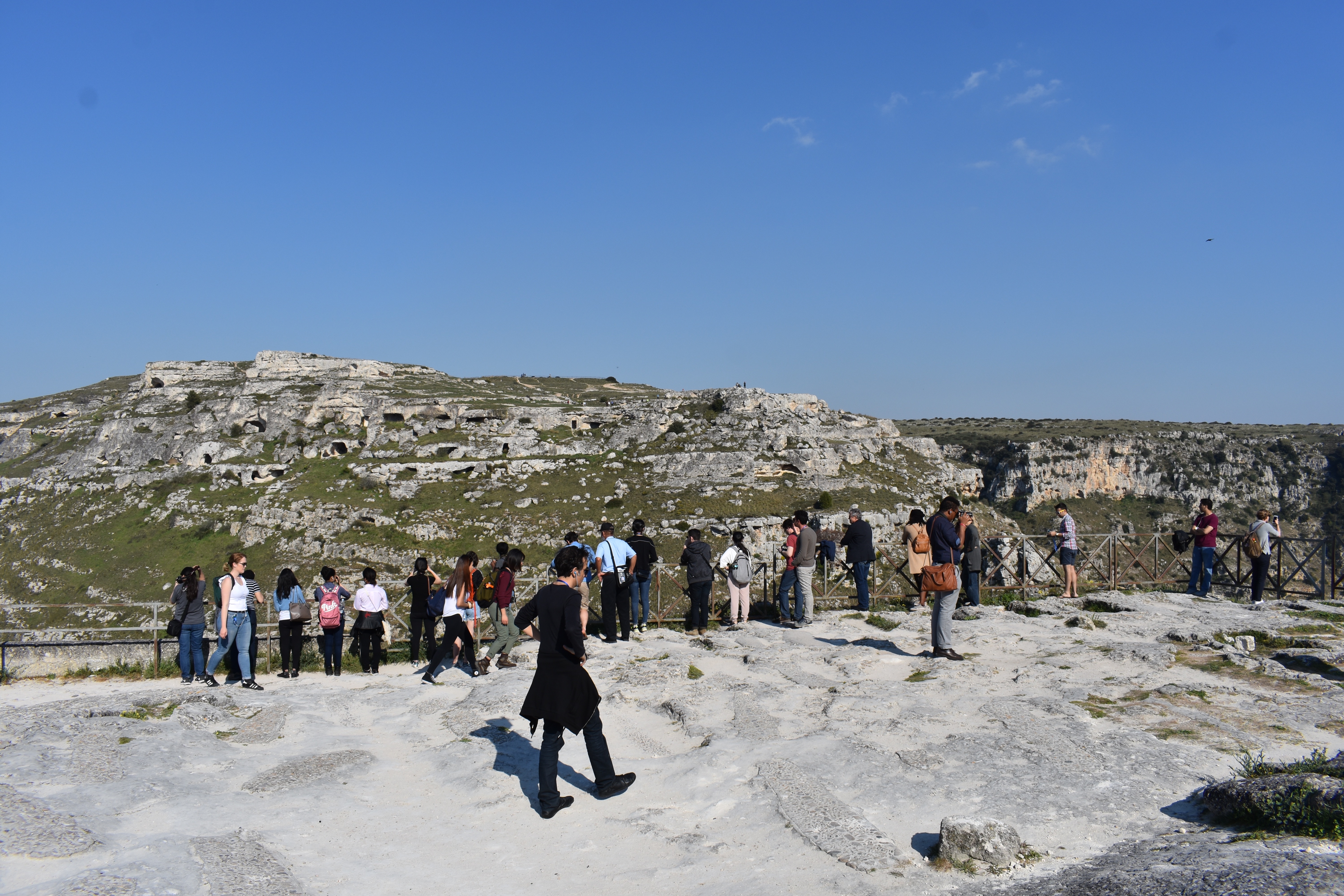
Early Friday morning, we set off on our third and final overnight field trip of the semester. After exploring the northern and central parts of Italy, we departed Rome on a bus for the south.
After a five-hour bus ride, we arrived in Matera, a small city in the region of Basilicata. All the buildings of the historic part of Matera — referred to as the Sassi, or stones in Italian — are built into the walls of a ravine. Partially dug into the sides of the gorge and partially built above ground, the cave dwellings were originally built hundreds of years ago. In the 19th and 20th centuries, improvements of living conditions failed to keep pace with the rapid rise in quality of life in Italy and, in the 1950s, the buildings in the Sassi were declared unlivable and the government began a longterm process of relocating all the inhabitants of the cave homes.
On a comprehensive walking tour, our guide — a native of the area — showed us everything from ancient churches to the living arrangements for an average family in the 1940s.


The next day, the academic disciplines split off from each other and the planners headed to La Martella, the “utopian town” built to house the residents of the Sassi who had been removed from their homes. We met with a husband and wife who showed us around their house.
Continuing our study of the 366th Regiment’s role in the Italian campaign, we learned about some of the regiment’s members who procured a bell for an Italian church in Sammichele di Bari during World War II. After the Nazis removed the bells from churches up and down Italy, soldiers in the 366th got a bell for them and installed it atop the spire.


After touring a museum decorated to the historical daily life for people in the region, we had a huge lunch in one of the few bed and breakfasts in the town. During the meal, our guide presented about wartime memory in Italy.



We made a brief stop in Trani to get a view of the Adriatic Sea and to walk through a church right on the coast. A few hours later, despite a few wrong turns, a car accident that shut down the highway and the classic Neapolitan traffic, we arrived in Naples late Saturday night.
The next day, we took a short bus ride to Herculaneum, Pompeii’s little brother. Like Pompeii, Herculaneum was a small Roman city that was buried under thousands of tons of volcanic ash when Mount Vesuvius erupted in 79 AD. Herculaneum is a little smaller than Pompeii and features mainly residential buildings. Using our knowledge from Urban History and Topography of Ancient Rome and Professor Jan Gadeyne’s lecture in the preceding week, we tried to reconstruct the ancient city from the ruins.

Later in the day, we toured a church complex and castle on top of a hill overlooking Naples and the bay. From there, we meandered down the hill, walking through the bustling streets of Naples until we reached the archeology museum, a collection of hundreds of one-of-a-kind statues and mosaics.
The next morning, we split off from the architects again and this time began our day in the Spanish quarter of the city, walking through the dense clusters of buildings. Nestled amidst the dark alley-like streets of the quarter was Foqus, a redeveloped convent full of all kinds of organizations. The 10,000-square meter complex had everything from a preschool and a graphic design school to offices for an online newspaper and a social entrepreneurship incubator.



On our previous field trip, we saw several ambitious projects that had yet to come to fruition and were still in the development phase. Foqus felt like a dream that had been realized and was already working incredibly successfully.


After Foqus, we walked back to the archaeology museum for a meeting with several historians of the Italian resistance fighters in World War II. We were lucky enough to meet with a 90-year old man who was part of the resistance against German occupation in Italy and hid Jews in his house in Naples.

We concluded our field by taking the metro to the periphery of the city to visit Scampia, a suburb of Naples known for its Velia housing projects. The Velia — Italy’s Pruitt Igoe — are a failed modernist public housing project that, like its St. Louis counterpart, descended into poverty and crime and never recovered. We had lunch in the town at a restaurant that employs Rom men and women, hoping to foster collaboration between Italians and Rom people by fighting the stigma surrounding these traditionally nomadic groups.


In Scampia, we also met with a group in a community garden in a nearby park. Set against the backdrop of dystopian buildings, we had perhaps our liveliest experience of the trip: joining an after-school program of elementary school kids as they dug for worms, learned about bees and enjoyed each other’s company.

We joined one of the parents in a traditional Neapolitan dance and then met with some organizers of the garden who aim to promote a sense of community in Scampia, despite the scars of the failed public housing projects.




